
The Entertainer can be very social and often encourages others to do shared activities. They love vibrant and exciting experiences. Looking for the perfect flowers to send an ESFP? We know just the ones! [Read more…]
Everything you want to know about flowers!

The Entertainer can be very social and often encourages others to do shared activities. They love vibrant and exciting experiences. Looking for the perfect flowers to send an ESFP? We know just the ones! [Read more…]
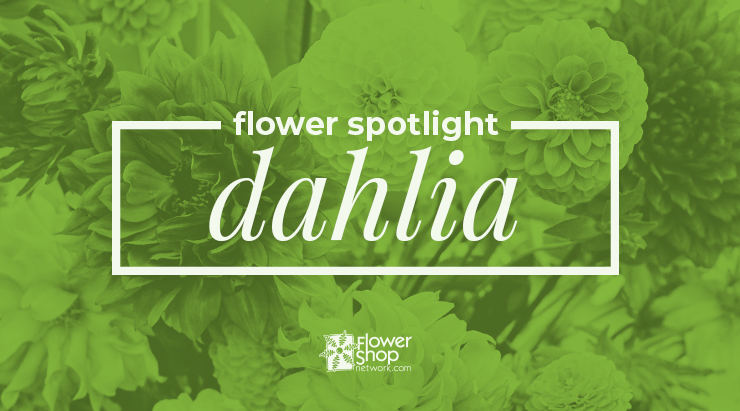
Dahlias are absolutely gorgeous flowers with strong symbolism. No matter what feeling you’re trying to convey with the flowers you send, dahlias are a great choice. Keep reading to learn more about the flower, its origin, and its color meanings! [Read more…]
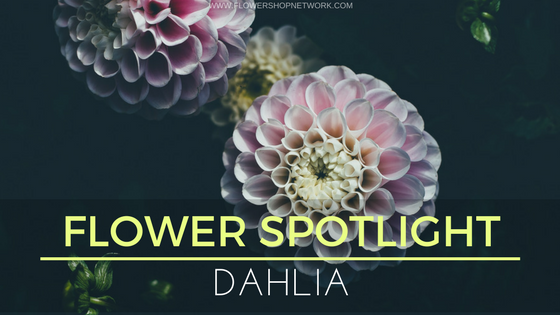
Imagine a flower that comes in almost as many sizes as it does colors. One that has had mysteries named after it and brides can’t seem to get enough of- Dahlias. They are romantic, mysterious, and so varied that they can often be mistaken for other flowers. [Read more…]
Flowers are beautiful at any time of year, and they will be blooming somewhere no matter how cold the temperature gets. With fall weather here in earnest, let’s look at a flower to remind us of warmer climes, the beautiful Dahlia!
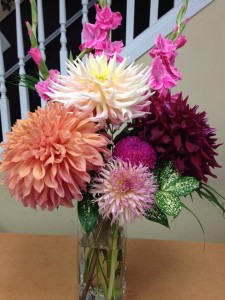 The Dahlia is native to Mexico but is also grown throughout Central America. Its roots were used by the Aztecs as a food source, but though European explorers took the dish home, it didn’t catch on. Instead, the beautiful flowers became the only reason European horticulturists had any interest. The tuberous roots are rarely eaten anymore, but the blooms have never lost their luster.
The Dahlia is native to Mexico but is also grown throughout Central America. Its roots were used by the Aztecs as a food source, but though European explorers took the dish home, it didn’t catch on. Instead, the beautiful flowers became the only reason European horticulturists had any interest. The tuberous roots are rarely eaten anymore, but the blooms have never lost their luster.
There is no one meaning that encompasses all the dahlia is, and that more than anything else may embody its symbolism. For some, the dahlia expresses dignity and elegance. It can also mean commitment and everlasting bonds, but that’s not all. To others, the dahlia means change, travel or even a warning of impending danger. It is also seen as meaning inner strength, creativity and standing up for what you believe.
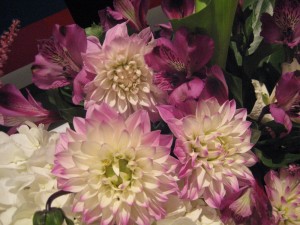 So with all those different meanings, when is a good time to gift someone with a dahlia?
So with all those different meanings, when is a good time to gift someone with a dahlia?
It’s perfect for that friend with a bit of a wild side, someone who tempers their adventures with a good heart and good intentions. It can also be given for any of the meanings listed above, it may just be a good idea to verbally express what your intentions were at the outset.
The dahlia is normally available from most flower shops, but as with any specific flower request it’s always a good idea to give the florist time to order some if they don’t carry them in stock. After all, flowers are highly perishable items. But don’t fret. That ordering process normally only takes a couple of days.
So contact your local florist and order a gorgeous arrangement with the always elegant dahlia!
I just saw photos from the 2012 Bloemencorso Zundert flower parade in Zundert Netherlands. To say the least.. mind blown!
Bloemencorso Zundert is the largest flower parade in the world entirely made by volunteers. The parade takes place on the first Sunday of September. Foats are large artworks made of steel wire, cardboard, papier-mâché and flowers.
In the Bloemencorso Zundert, only dahlias are used to decorate the objects, and it takes thousands of them just to cover one float. The huge floats are made by twenty different hamlets and each of them consists of hundreds of builders, aged 1 to 100, who are all equally crazy about the bloemencorso.
The older members of the hamlet are often responsible for planting and growing the dahlias, while the younger ones build the float in large temporary tents that are built exclusively for the event. The bloemencorso is also a competition. A professional and independent jury decides which float is the most beautiful and which hamlet will be crowned the winner of that year.
In the Victorian Era, flowers were used as a means of communication. Each flower had it’s own, particular meaning and bouquets were used to send coded messages. People today still send flowers chosen specifically for their flower meanings.
Not only did the Western world have its own coded, flower language, the East had one as well— Hanakotoba, the Japanese language of flowers. Although, obviously not as popular today as it once was, Hanakotoba is still used in many Japanese movies and animations.
|
Kanji |
English |
Meaning |
| アマリリス | Amaryllis | Shy |
| アネモネ | Anemone (white) | Sincere |
| 椿 | Camellia (red) | In Love |
| 椿 | Camellia (yellow) | Longing |
| 椿 | Camellia (white) | Waiting |
| カーネーション | Carnation | Passion |
| 桜 | Cherry Blossom | Kind/Gentle |
| 黄菊 | Chrysanthemum (yellow) | Imperial/Elegant |
| 白菊 | Chrysanthemum (white) | Truth/Self-Esteem |
| 水仙 | Daffodil | Respect |
| 天竺牡丹 | Dahlia | Good Taste |
| 雛菊 | Daisy | Faith |
| 勿忘草 | Forget-Me-Not | True Love |
| フリージア | Freesia | Immaculate |
| 梔子 | Gardenia | Secret Love/Pure |
| 紫陽花 | Hydrangea | Pride |
| アイリス / 菖蒲 | Iris | Noble Heart/Good News |
| 白百合 | Lily (white) | Purity |
| 百合 | Lily of the Valley | Sweet/Promise of Happiness |
| 鬼百合 | Tiger Lily | Wealth |
| マグノリア | Magnolia | Natural/Love For Nature |
| 雛芥子 | Poppy | Comfort |
| 紅薔薇 | Rose (red) | Love/In Love |
| 薔薇 | Rose (white) | Innocence/Devotion |
| 桃色薔薇 | Rose (pink) | Trust/Confidence |
| 黄色薔薇 | Rose (yellow) | Noble |
| チューリップ | Tulip | Charity/Trust |
Contact your local florist today and ask for an arrangement using your favorite Hanakotoba flower meanings.
This post is brought to you by local Honolulu Hawaii Florists.
Not in Honolulu? No worries, use Flower Shop Network’s handy directory of local florists to find a florist near you!
Ask the Expert: Name of the plant we bought today?
We bought a plant today in one of the private gardens open to the public for the charity. The leaves are dark (blackish purple) with yellow flowers about 5cm and about 1 and half metres. They told us it is called Clarion but alas we can’t find it anywhere online or in the books. We need to know how to take care of it. There are still some closed buds on it so it is just starting to flower at this time of year. Jacqueline
Flower Shop Network‘s Plant Expert Reply: The people who sold you the plant were correct in calling it a Clarion. They just didn’t tell you the complete name – Dahlia ‘Clarion’. What you have is a type of Dahlia. For classification purposes dahlias are divided into various classes according to their form and size. This particular Dahlia is in the single class. This means the flowerheads are composed of a single row of uniform, evenly spaced ray florets.
August is the peak blooming time for Dahlias. To learn more about this wonderful flower, Read Mandy’s August Flower Gets it’s Dues: Dahlia Flower Day post. Once a month she spotlights a flower and this past August it was the Dahlia.
Tis the season! For Dahlias that is. August is the peak blooming month for Dahlias, and the folks over at Dahlia Dell in the Golden Gate Park of San Fransisco couldn’t be happier. Dahlias have had their own special plot in the park since the 1920s. Dahlias are even San Fransisco’s official flower!
San Fransico Mayor Gavin Newsom declared Saturday, August 21st, to be Dahlia Flower Day in San Fransisco.
DAHLIA
Use: Flower
Type: Tuberous Perennials
Height: 8-20″
GROWING
Planting Zones: 7-11
Requirements: Humus-rich, well-drained soil in full sun.
DESIGNING
Stem: 10-20″
Blossom Size: 2-10″ diameter
Texture: Satin
Silhouette: Dense/Round
Vase Life: 3-7 Days
Colors: Large Variety
Bloom Season: Mid summer to late frost.
Flowers Available: Year Round
ABOUT DAHLIAS
The Dahlia is one of the most beautiful of the native American flowers. They were used abundantly by the Aztecs of Mexico, as food, medicine and of course, decorations!
 Very little is known about the early history of the Dahlia due to the destruction of the Aztec culture after the Spanish Conquest. Francisco Hernadez was sent to Mexico by King Phillip II of Spain in 1570 to study it’s natural resources. He stayed for 7 years and was the first to describe the plants we know as Dahlias today. He called them Acocotli and Cocoxochitl.
Very little is known about the early history of the Dahlia due to the destruction of the Aztec culture after the Spanish Conquest. Francisco Hernadez was sent to Mexico by King Phillip II of Spain in 1570 to study it’s natural resources. He stayed for 7 years and was the first to describe the plants we know as Dahlias today. He called them Acocotli and Cocoxochitl.
In October of 1789, the first Dahlia bloomed in Europe at the Madrid Botanical Garden. By the early part of the 1800s, Dahlias were growing in luxurious gardens all over Europe.
The thing about Dahlias that sets them apart from other flowers in the plant world is the fact that they are octoploids. This means they have eight sets of chromosomes, whereas most plants only have two. (Humans have 23.) This gives the Dahlia the unique ability to be cultivated with a extremely high variety of results.
CLASSIFICATION OF DAHLIAS
Dahlia varieties are based not only on shape, but size. Dahlias are a genus with 30 species and over 20,000 cultivars… (Big family!)
Dahlia Size Categories:
1. Formal Decorative Dahlias (FD) – flat, rounded florets regularly arranged.
2. Informal Decorative Dahlias (ID) – twisty, curvy or wavy florets arranged irregularly.
3. Semi-cactus Dahlias (SC) – ray florets that can be straight, incurved or recurved
4. Straight-cactus Dahlias (C)- ray florets arranged regularly
5. Laciniated Dahlias (LC) – twisted and split, ray florets
6. Waterlily Dahlia (WL) – broad, slightly cupped florets
7. Collarette Dahlia – single row of ray florets around a center ring of shorter florets
8. Anemone Dahlia – ray florets composed around central tubular disk florets
9. Ball (Ba), Miniature Ball (MBa) Pompon (P) – ball-shaped or slightly flatted flowerheads
10. Single Dahlia – One row of uniform, ray florets
11. Orchid Dahlias – single row of ray florets with inward-curving margins
Novelty Dahlias (NO) – Dahlias whose characteristics do not fit into any other category.
Dahlias are a great addition to fall flower favorites. With their wide color varieties and late-summer blooming season, this versatile flower is a great addition to your fall flower arrangements and centerpieces. Check out this great article on 2010 Fall Floral Design Trends and get a jump-start on planning your fall floral decor today!
This post is brought to you by local San Francisco, CA florists.
Not in San Fran? Use Flower Shop Network‘s handy directory to find YOUR real local florist!
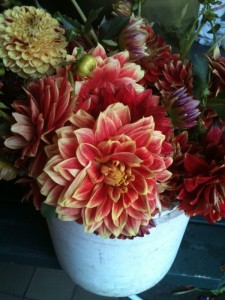 Ask the Expert: What kind of flower is this?
Ask the Expert: What kind of flower is this?
I saw this flower at the Seattle Pike Place Market but I forgot to ask what kind of flower it is?
The main color is a light pink with a yellow center and yellow on the tips.
Thanks for any help! Adam Lowe
Flower Shop Network Plant Expert Reply:I believe what you have is a type of Dahlia. This genus has about 30 different species and a variety of different flower forms: formal decorative, informal decorative, semi-cactus, straight cactus, laciniated, ball, waterlily, anemone, collarette, orchid and single. I am guessing that your Dahlias are informal decorative.
Depending on the form, some species have very open bloom with few petals – while other species have tight blooms with an abundance of petals. Dahlias also come in a variety of colors: red, orange, yellow, pink, bi-color, purple, burgundy and white.
Dahlias bloom in mid-summer and are perennial in zone 9-11. However, the tubers can be lifted in the winter and replanted in the spring in zones that are too cold.
Your local florist probably uses Dahlias in many of their flower arrangements.
Want flowers but don’t have time to run to Pike Place Market? Call your local Seattle Florist. They can deliver flowers any where in the Seattle area.
Ask the Expert: How to use a flower center
Hello:
I recently acquired this beautiful cut glass flower center ca. 1905 and would like to know what type of flowers from that era would have been used. The vase measures 5″ in height and has a base diameter of 8″. Thanks for your help. Michael
Flower Expert Reply:
What a beautiful vase. Take your lead from the Victorian Era. During the Victorian Era (Romantic Age), the growing and arranging of flowers was very popular. Popular flowers at the time were streaked carnations or tulips, anemones, dahlias, freesias, gardenias, salvia, stephanotis, sweet pea, sweet William, verbena and roses. The use of foliage was popular as well. So, you could use fern or plumed grasses in your vase. Strong colors like dark purple, magenta, red, orange and mustard yellow were often the popular choice for flower arrangements.
Any flower you choose will compliment your beautiful vase. Please send a picture of the vase filled with flowers. I’d love to see it.
Pittsburgh florists like this flower question.
Copyright © 2025 · News Theme on Genesis Framework · WordPress · Log in


 Find Your
Find Your